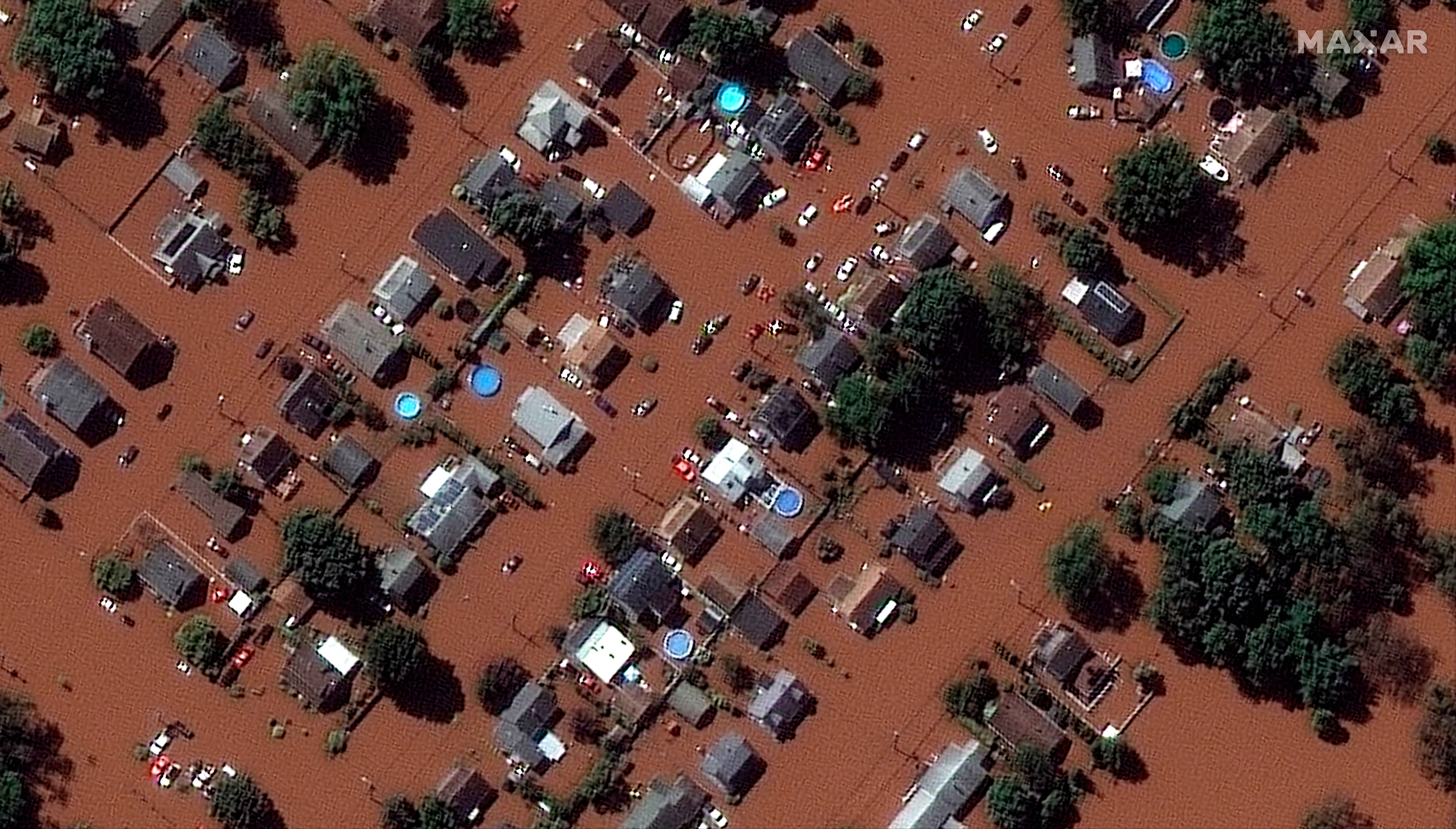After Ida's fury, infrastructure key in preventing misery
The destruction left by the remnants of Hurricane Ida have officials and experts agreeing that infrastructure including roads, sewers and housing in New York and New Jersey must be quickly improved

Your support helps us to tell the story
From reproductive rights to climate change to Big Tech, The Independent is on the ground when the story is developing. Whether it's investigating the financials of Elon Musk's pro-Trump PAC or producing our latest documentary, 'The A Word', which shines a light on the American women fighting for reproductive rights, we know how important it is to parse out the facts from the messaging.
At such a critical moment in US history, we need reporters on the ground. Your donation allows us to keep sending journalists to speak to both sides of the story.
The Independent is trusted by Americans across the entire political spectrum. And unlike many other quality news outlets, we choose not to lock Americans out of our reporting and analysis with paywalls. We believe quality journalism should be available to everyone, paid for by those who can afford it.
Your support makes all the difference.Deadly flooding delivered to the Northeast by the torrential rains of what remained of Hurricane Ida has brought a new urgency and a fresh look to how roads, sewers, bridges and other infrastructure must be improved to prevent such a catastrophe from happening again.
The world is changing and “our whole mindset, the playbook that we use,” must change too, New Jersey Gov. Phil Murphy said Thursday as he toured Mullica Hills, New Jersey, where a 150-mph (241 kph) tornado splintered homes. “We have got to leap forward and get out ahead of this.”
The devastation exposed flaws in preparation plans even after New Jersey and New York spent billions of dollars to prevent a reoccurrence of Superstorm Sandy’s destruction in 2012, with much spent to protect coastal communities.
“Flash floods are now coming. It’s not waves off the ocean or the sound,” New York Gov. Kathy Hochul said soon after last week’s storm swept through.
Hochul and Murphy, both Democrats, agreed that the increasing frequency and intensity of storms demand a new approach that factors in flash floods.
The storm dumped so much rain so fast that a record 3 inches (7.5 centimeters) fell in an hour in New York Wednesday, overwhelming drainage systems. Some lives were lost when water flooded basement apartments, subway stations and vehicles. At least 50 people died in five northeastern states.
“I don’t think many people could have predicted the severity of the loss of life and damage done by the flash rains,” said Dr. Irwin Redlener, founding director of the National Center for Disaster Preparedness at Columbia University. “People drowning in their basement apartments, in cars and so on is not something we typically would ever see in New York.”
Hochul promised new answers to pressing questions, like whether warnings were clear enough and communications with the weather service were flawed as well as if subways needed a faster shutdown.
The effects of climate change are “happening right now,” Hochul said. “It is not a future threat.”
Warnings of worsening storm damage are not new.
In August 2011, the aftermath of Hurricane Irene killed six in Vermont, left thousands homeless, and damaged or destroyed over 200 bridges and 500 miles of highway. Of the state’s 251 towns, 225 had infrastructure damage. Thirteen communities were severed from the outside world after flooding washed out roads, electricity and telephone communication. National Guard helicopters ferried supplies to stranded residents for days.
More than half a billion dollars was spent by the state and federal governments, and in donations by private individuals, to help Vermont recover.
To weaken effects of future storms, New York and other areas can learn from other cities like Singapore, Copenhagen and Amsterdam, where solutions included turning asphalt parking lots and schoolyards into spaces that can retain water, said Amy Chester, managing director for the nonprofit Rebuild by Design.
“Climate change is expensive. We’re going to have to spend money on it and every single dollar we spend in any type of infrastructure needs to take into consideration the future,” she said.
Redlener, the disaster preparedness expert, said New York City and other communities need to rethink warning systems and consider reengineering drainage, electrical and storm warning systems.
He noted that the city's aging subway system has long been relied upon to absorb excess water from heavy rains, but that was before record rainfalls set off unprecedented flooding.
“That can’t work because there’s people in the subways and we have to think about their safety also,” he said.
And he said the future of New York City's basement apartments, which could number in the thousands, must be reconsidered.
"What are we going to do for them now and what are we gonna do for people in the future? Are we going to even permit people legally to live in basement apartments, and if not, do we have the capacity and the resources to have other alternatives? I don’t know that we do,” he said.
The system for warning people in areas threatened must be rethought and plans should be in place for what people should do and where they should go, he said.
Linda Shi, an assistant professor in the department of city and regional planning at Cornell University, said there are limits to what infrastructure improvements such as larger storm pipes and road elevation can bring.
She said most planners agree the strategies only buy time.
If the worsening storm trends continue, she said, ultimately there will be increased conversations about “managed retreat.”
"If you want to make space for water, that means making space for water by moving people out of those places,” Shi said.
____
Associated Press reporters Larry Neumeister in New York City, Wayne Parry in Piscataway, New Jersey, and Michael Hill in Albany, New York, contributed to this story.